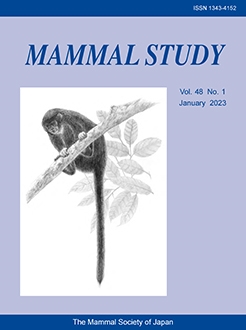The subfamily Callicebinae is composed of 35 recognized living species that are grouped into the genera, Callicebus, Plecturocebus, and Cheracebus. In this study we assess the taxonomic status of the population of Cheracebus from the Nanay-Tigre interfluvium in Peruvian Amazonia, based on morphological (cranial and pelage) and molecular (mitochondrial DNA) evidence. Following the integrated assessment of the evidence, we conclude that specimens from the Nanay-Tigre interfluvium comprise a distinct lineage at the species level. It is easily distinguished from the other species of the genus, including C. lucifer to which the new species was considered to belong so far, by, among other characters, overall Reddish-brown pelage; crown intense reddish brown; Cream-colored collar, like a bow tie, with a band that does not extend laterally. The description of a new species of Cheracebus is not unexpected since other new species of titi monkeys have been described in recent years and there are several candidate species awaiting validation of their distinction. As such, we anticipate that in the next few years several taxonomic changes will be proposed in order to reveal a classification that mirrors the real species diversity of the subfamily Callicebinae.
How to translate text using browser tools
31 January 2023
A New Species of Titi Monkey, Genus Cheracebus Byrne et al., 2016 (Primates: Pitheciidae), from Peruvian Amazonia
Edgardo M. Rengifo,
Guillermo D'Elía,
Gabriel García,
Elvis Charpentier,
Fanny M. Cornejo
ACCESS THE FULL ARTICLE

Mammal Study
Vol. 48 • No. 1
January 2023
Vol. 48 • No. 1
January 2023
Aquino's titi monkey
Peru
Platyrrhini
taxonomy




